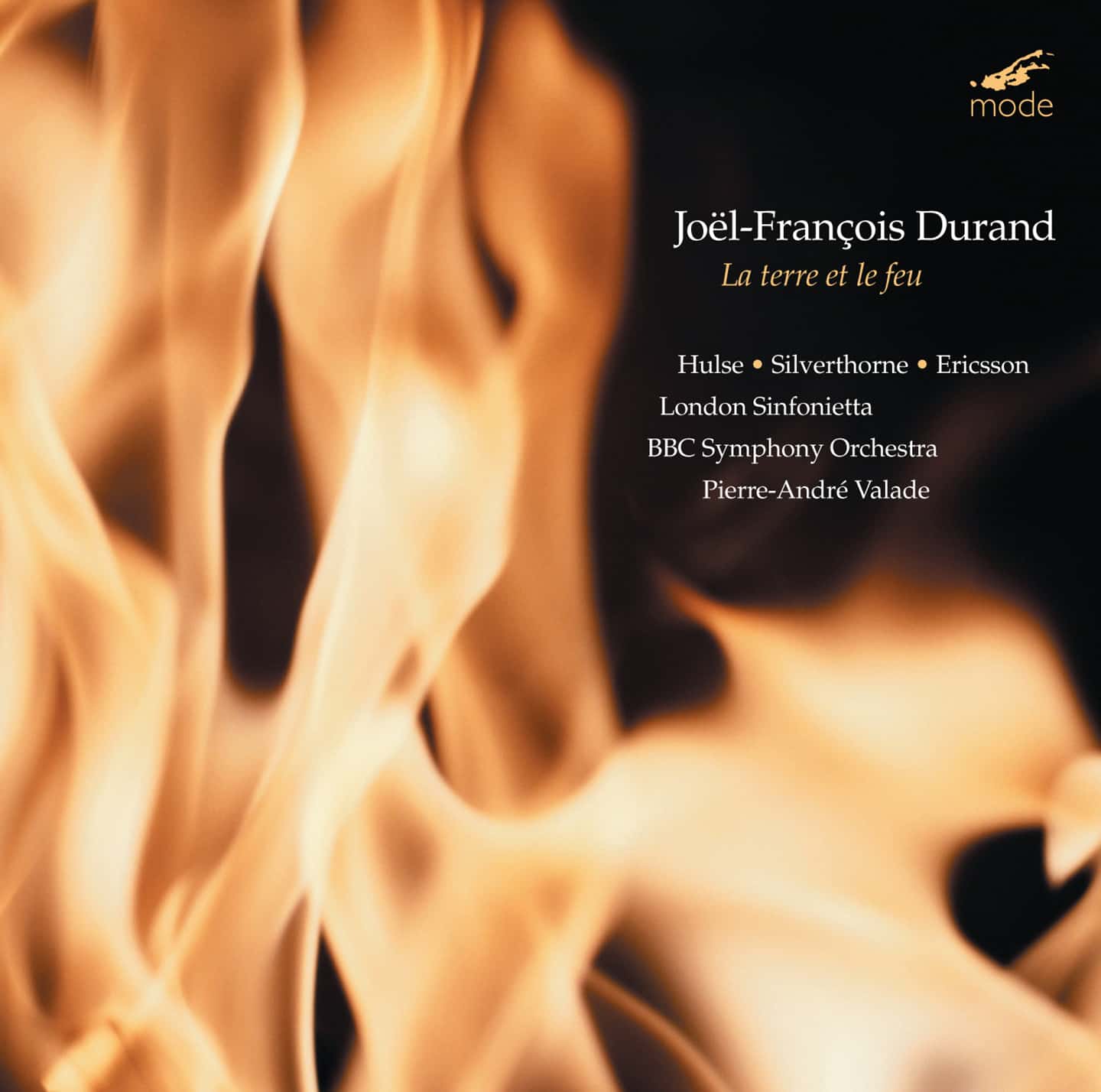La terre et le feu (1999) (19:31)
Gareth Hulse, oboe
London Sinfonietta
Pierre-André Valade, conductor
Download the MP3 sample (1.6MB)
Les raisons des forces mouvantes (1996)
Incipit (1:28)
Download the MP3 sample (1.2MB)
L’eau (5:07)
La terre (6:04)
L’air (1:22)
Le feu (3:21)
Download the MP3 sample (714KB)
Hans-Ola Ericsson, organ of Luleå Cathedral, Gammelstad, Sweden. Built 1984-1987 by Grönlund Orgelbyggeri.
La mesure des choses III
La mesure de la terre et du feu (1999) (12:30)
Gareth Hulse, oboe
Paul Silverthorne, viola
Download the MP3 sample (1.8MB)
Athanor (2001) (18:57)
BBC Symphony Orchestra
Stephen Bryant, leader
Pierre-André Valade, conductor
Commission of / Auftrag von / Commande de Radio France
Download the beginning MP3 sample (2.2MB)
Download the beginning 3rd section MP3 sample (1.8MB)
Download the beginning of the last section MP3 sample (1.3MB)
Composer supervised first recordings.
This disc of French composer Joël-François Durand’s music amplifies his ongoing interest in the classical ‘four elements’: air, earth, fire and water.
World class performers include the London Sinfonietta, BBC Symphony Orchestra, conductor Pierre-André Valade, and renowned Swedish organist Hans-Ola Ericcsson.
The oboe concerto, La terre et le feu features a hallmark of Durand’s work: rising figures that gradually strain upwards. The work consists of an introduction and four principal sections, with a coda. Embedded within this is the entire structure of the requiem mass. In the last main section, figures from earlier sections contest with, and, as Durand puts it, ‘consume’ one another, leaving the oboe to rise from the ashes at the end.
The title of the solo organ piece Les raisons des forces mouvantes comes from a treatise by Salomon de Caux, published in 1615, which concerns itself with scientific experiments based on the four elements, and various machines that arise from their interaction (including hydraulic organs!). Durand’s composition follows Caux’s water – earth – air – fire sequence.
Joël-François Durand (b.1954, Orléans, France) studied mathematics and music in Paris, then composition with Brian Ferneyhough at the Musikhochschule Freiburg (Germany) and with Bülent Arel and Daria Semegen at the State University of New York at Stony Brook (USA). He followed masterclasses and composition courses by György Ligeti and Luciano Berio at the Centre Acanthes. In 1987 he attended the course in computer music at IRCAM. He has been teaching composition and theory at the University of Washington since 1991, where he is currently Professor of Composition, as well as Associate Director of the School of Music.

